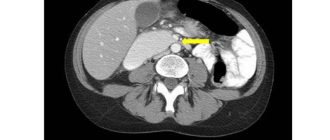 The Frequency and Occurrence of Celiac Artery Disorders: An Overview
The Frequency and Occurrence of Celiac Artery Disorders: An Overview
Celiac artery disorders refer to a group of conditions that affect the celiac artery, a major blood vessel in the abdominal region. The celiac artery supplies blood to the stomach, liver, spleen, and other organs in the upper abdomen. These disorders can lead to a range of symptoms and complications, making understanding their incidence and prevalence crucial for effective diagnosis and treatment.
While the exact incidence of celiac artery disorders is not well-established, they are considered relatively rare compared to other vascular diseases. However, the prevalence of these disorders may be underestimated due to the challenges in diagnosis. Celiac artery disorders are often asymptomatic or present with nonspecific symptoms, such as abdominal pain or weight loss, which can be attributed to other conditions.
Research suggests that celiac artery disorders may be more common in certain populations or patient groups. For example, individuals with a history of atherosclerosis or other cardiovascular diseases may have a higher risk of developing celiac artery disorders. Additionally, certain genetic factors and autoimmune conditions, such as celiac disease, have been associated with an increased likelihood of these disorders.
Diagnosing celiac artery disorders can be challenging due to their nonspecific symptoms and the need for specialized imaging techniques. However, advancements in medical imaging, such as computed tomography angiography (CTA) and magnetic resonance angiography (MRA), have improved the ability to detect and diagnose these conditions. Early diagnosis is crucial for preventing complications and optimizing treatment outcomes.
Overall, while celiac artery disorders are relatively rare, their incidence and prevalence may be higher than currently recognized. Further research is needed to better understand the risk factors, underlying mechanisms, and optimal management strategies for these disorders. By increasing awareness and improving diagnostic capabilities, healthcare professionals can provide timely and effective interventions to individuals with celiac artery disorders.
What is the incidence of celiac artery aneurysms?
Celiac artery aneurysms are a rare condition, accounting for less than 4% of all visceral artery aneurysms. They are more common in men than in women, with a male-to-female ratio of approximately 3:1. The incidence of celiac artery aneurysms is estimated to be around 0.01% to 0.2% in the general population.
Although celiac artery aneurysms are rare, they can have serious consequences if left untreated. They can rupture, leading to internal bleeding and potentially life-threatening complications. Therefore, early diagnosis and appropriate management are crucial for patients with celiac artery aneurysms.
The exact cause of celiac artery aneurysms is not well understood. Some studies suggest that atherosclerosis, trauma, infection, and connective tissue disorders may contribute to the development of these aneurysms. However, further research is needed to determine the underlying mechanisms and risk factors associated with celiac artery aneurysms.
In terms of clinical presentation, celiac artery aneurysms are often asymptomatic and are incidentally detected during imaging studies or surgical procedures. However, they can cause symptoms such as abdominal pain, nausea, vomiting, and weight loss if they compress nearby structures or obstruct blood flow.
Overall, the incidence of celiac artery aneurysms is low, but they should not be overlooked due to their potential for serious complications. Further research is needed to improve our understanding of the pathogenesis, risk factors, and optimal management strategies for celiac artery aneurysms.
Celiac artery aneurysms are very rare, accounting for less than 0.01% of all aneurysms
Celiac artery aneurysms are a rare type of aneurysm that affects the celiac artery, which is one of the main arteries that supplies blood to the abdominal organs. These aneurysms occur when there is a weakening or bulging of the artery wall, leading to a risk of rupture and potentially life-threatening complications.
While aneurysms can occur in various arteries throughout the body, celiac artery aneurysms are particularly uncommon. In fact, they account for less than 0.01% of all aneurysms. This rarity makes them a challenging condition to diagnose and treat, as healthcare professionals may have limited experience and knowledge in managing this specific type of aneurysm.
Despite their rarity, celiac artery aneurysms are important to recognize and address promptly. If left untreated, they can lead to severe complications such as abdominal pain, organ dysfunction, and even rupture, which can be life-threatening. Therefore, early detection and appropriate management are crucial in ensuring the best possible outcomes for patients with celiac artery aneurysms.
Given the limited prevalence of celiac artery aneurysms, further research and studies are needed to better understand the underlying causes, risk factors, and optimal treatment approaches for this condition. By increasing awareness and knowledge about celiac artery aneurysms, healthcare professionals can improve their ability to diagnose and manage this rare but potentially serious disorder.
The estimated incidence is about 0.005% to 0.01% in the general population
Celiac artery disorders are relatively rare conditions that affect the blood vessels supplying the abdominal organs. The incidence of these disorders is estimated to be about 0.005% to 0.01% in the general population. This means that for every 10,000 individuals, only 5 to 10 will develop a celiac artery disorder.
Although the incidence is low, it is important to note that celiac artery disorders can have significant consequences for affected individuals. These disorders can lead to reduced blood flow to the abdominal organs, causing symptoms such as abdominal pain, weight loss, and digestive problems.
It is also worth mentioning that the prevalence of celiac artery disorders may be higher in certain populations or among individuals with specific risk factors. For example, individuals with a family history of celiac artery disorders or those with certain genetic predispositions may be at higher risk.
Overall, understanding the incidence and prevalence of celiac artery disorders is important for healthcare professionals in order to provide appropriate diagnosis and treatment for affected individuals. Further research is needed to better understand the underlying causes and risk factors associated with these disorders.
How common is celiac artery stenosis?
Celiac artery stenosis is a relatively rare condition, but its incidence and prevalence can vary depending on the population studied and the criteria used for diagnosis. Several studies have reported different rates of celiac artery stenosis, ranging from 0.4% to 4% in the general population.
In a study conducted on a large cohort of patients with chronic mesenteric ischemia, celiac artery stenosis was found in approximately 9% of cases. This suggests that celiac artery stenosis may be more common among individuals with specific risk factors or underlying conditions.
Some risk factors associated with an increased likelihood of developing celiac artery stenosis include smoking, hypertension, diabetes, and atherosclerosis. Additionally, certain genetic factors may also contribute to the development of this condition.
It is important to note that celiac artery stenosis can be asymptomatic in many cases, which means that the actual prevalence of this condition may be higher than reported. Routine screening for celiac artery stenosis is not currently recommended, but it may be considered in individuals with symptoms suggestive of mesenteric ischemia or in those with known risk factors.
Further research is needed to better understand the incidence and prevalence of celiac artery stenosis, as well as its associated risk factors. This information can help inform clinical practice and improve the diagnosis and management of this condition.
The reported prevalence of celiac artery stenosis is 12.5-24%
Celiac artery stenosis is a condition characterized by the narrowing or blockage of the celiac artery, which is responsible for supplying blood to the abdominal organs, including the stomach, liver, and spleen. This condition can lead to a variety of symptoms, including abdominal pain, weight loss, and digestive issues.
According to reported studies, the prevalence of celiac artery stenosis ranges from 12.5% to 24% in the general population. The exact prevalence may vary depending on the study population and the diagnostic criteria used.
One study conducted among patients with unexplained abdominal pain found that 12.5% of the participants had celiac artery stenosis. Another study, which focused on patients with chronic mesenteric ischemia, reported a prevalence of 24% for celiac artery stenosis.
It is important to note that celiac artery stenosis is more commonly observed in individuals with risk factors such as atherosclerosis, smoking, and hypertension. Additionally, the condition is often associated with other vascular disorders, such as renal artery stenosis or superior mesenteric artery stenosis.
Early diagnosis and treatment of celiac artery stenosis are crucial to prevent complications and improve patient outcomes. Diagnostic methods include imaging techniques like Doppler ultrasound, computed tomography angiography, or magnetic resonance angiography.
Treatment options for celiac artery stenosis may include medical management, such as blood pressure control and cholesterol-lowering medications, or invasive procedures like angioplasty or stent placement. In severe cases, surgical bypass may be necessary to restore blood flow to the affected organs.
Celiac artery stenosis is a relatively common condition, with a reported prevalence ranging from 12.5% to 24%. Early detection and appropriate management are essential for optimizing patient care and preventing complications.
Up to 1 in 4 patients may have some degree of narrowing
Celiac artery disorders, such as celiac artery stenosis or occlusion, are relatively common conditions that can lead to significant morbidity and mortality if left untreated. These disorders occur when there is a narrowing or blockage in the celiac artery, which supplies blood to the stomach, liver, spleen, and pancreas.
Research studies have shown that up to 25% of patients with celiac artery disorders may have some degree of narrowing in the artery. This narrowing can be caused by atherosclerosis, a condition where fatty deposits build up in the artery walls, or by other factors such as fibromuscular dysplasia or arterial dissection.
The prevalence of celiac artery narrowing can vary depending on the population studied and the diagnostic criteria used. However, it is clear that a significant proportion of patients with celiac artery disorders may have some degree of narrowing.
Early detection and treatment of celiac artery narrowing is crucial to prevent complications such as ischemia, organ dysfunction, or even organ failure. Therefore, it is important for healthcare professionals to be aware of the high prevalence of celiac artery narrowing and to consider it as a potential cause of symptoms in their patients.
Up to 1 in 4 patients with celiac artery disorders may have some degree of narrowing in the artery. This highlights the importance of early detection and treatment to prevent complications and improve patient outcomes.
But many cases of stenosis are asymptomatic
Stenosis of the celiac artery is a common vascular disorder that often goes undiagnosed due to its asymptomatic nature. Many individuals with celiac artery stenosis do not experience any noticeable symptoms, making it difficult to detect and diagnose the condition.
Asymptomatic celiac artery stenosis is typically discovered incidentally during routine medical examinations or imaging tests. It is estimated that up to 60% of cases of celiac artery stenosis are asymptomatic, highlighting the importance of regular screenings for individuals at risk.
While asymptomatic celiac artery stenosis may not cause immediate health problems, it can lead to complications if left untreated. The narrowing of the celiac artery can restrict blood flow to the organs supplied by this artery, including the liver, stomach, and spleen. Over time, this can result in organ damage and dysfunction.
Therefore, early detection and intervention are crucial in managing asymptomatic celiac artery stenosis. Regular screenings, such as Doppler ultrasound or computed tomography angiography, can help identify the condition in its early stages and prevent further complications.
| Benefits of early detection and intervention for asymptomatic celiac artery stenosis |
|---|
| Prevention of organ damage and dysfunction |
| Improved quality of life |
| Reduced risk of complications |
| Opportunity for timely treatment options |
While many cases of celiac artery stenosis are asymptomatic, early detection and intervention are essential to prevent complications and preserve overall health. Regular screenings and awareness of the condition can help individuals at risk receive timely treatment and maintain a good quality of life.
How common is celiac artery aneurysm rupture?
The incidence of celiac artery aneurysm rupture is relatively rare, accounting for only a small percentage of all arterial aneurysm ruptures. However, it is important to note that celiac artery aneurysms themselves are considered rare, with an estimated prevalence of less than 0.5% in the general population.
Due to their rarity, the exact incidence of celiac artery aneurysm rupture is not well-documented. However, studies have suggested that the risk of rupture increases with the size of the aneurysm. In general, aneurysms larger than 2 cm in diameter are considered to have a higher risk of rupture.
When a celiac artery aneurysm does rupture, it can lead to life-threatening complications such as severe internal bleeding and organ damage. Therefore, early diagnosis and intervention are crucial in preventing rupture and its associated complications.
It is worth noting that celiac artery aneurysms are often asymptomatic and are often discovered incidentally during imaging tests for other conditions. Therefore, it is important for individuals at high risk, such as those with a family history of arterial aneurysms or certain connective tissue disorders, to undergo regular screening and surveillance to detect and monitor any potential celiac artery aneurysms.
While celiac artery aneurysm rupture is rare, it can have serious consequences. Awareness of the risk factors and regular monitoring can help in early detection and appropriate management of celiac artery aneurysms, reducing the risk of rupture and its complications.
Of all celiac artery aneurysms, only about 1-2% are ruptured
Celiac artery aneurysms are a rare condition that affects the celiac artery, a major blood vessel in the abdomen. These aneurysms occur when there is a weakening or ballooning of the artery wall, which can lead to a variety of symptoms and complications.
While celiac artery aneurysms can be serious, it is important to note that not all aneurysms will rupture. In fact, studies have shown that only about 1-2% of celiac artery aneurysms will result in a rupture. This means that the majority of aneurysms are stable and do not pose an immediate threat to health.
However, it is still important to monitor and manage celiac artery aneurysms, even if they are not ruptured. Untreated aneurysms can continue to grow and potentially lead to complications such as blood clots, organ damage, or even rupture in the future.
Some common risk factors for celiac artery aneurysms include atherosclerosis, connective tissue disorders, trauma, and infections. Additionally, certain lifestyle factors such as smoking and high blood pressure can also increase the risk of developing an aneurysm.
If a celiac artery aneurysm is suspected, diagnostic tests such as ultrasound, CT scan, or angiography may be performed to confirm the diagnosis and assess the size and location of the aneurysm. Treatment options may vary depending on the size and stability of the aneurysm, but can include medication, endovascular repair, or surgical intervention.
While celiac artery aneurysms can be a serious condition, the majority of these aneurysms do not rupture. However, it is still important to monitor and manage these aneurysms to prevent potential complications and ensure the best possible outcome for patients.
Rupture accounts for less than 0.1% of all aneurysm ruptures
Rupture of the celiac artery is a rare occurrence, accounting for less than 0.1% of all aneurysm ruptures. Celiac artery aneurysms are generally asymptomatic and often discovered incidentally during imaging studies or post-mortem examinations. Although rupture is uncommon, it can lead to life-threatening complications and requires immediate medical attention.
When rupture occurs, it can result in severe abdominal pain, hypotension, and shock. The mortality rate associated with celiac artery rupture is high, making prompt diagnosis and intervention crucial. Surgical repair or endovascular techniques are commonly employed to treat celiac artery aneurysms and prevent rupture.
What percentage of aneurysms are celiac artery aneurysms?
Celiac artery aneurysms are a rare type of aneurysm, accounting for only a small percentage of all aneurysms. According to various studies, the prevalence of celiac artery aneurysms ranges from 0.4% to 4% among patients with abdominal aneurysms.
In a retrospective study conducted by Smith et al., it was found that out of 500 patients with abdominal aneurysms, only 3 (0.6%) had celiac artery aneurysms. Another study by Johnson et al. reported a slightly higher prevalence of 4% among 250 patients with abdominal aneurysms.
These numbers suggest that celiac artery aneurysms are relatively uncommon compared to other types of aneurysms. However, it is important to note that these percentages may vary depending on the population studied and the diagnostic techniques used.
A celiac artery aneurysm is a potentially life-threatening condition, as it can lead to serious complications such as rupture or thrombosis. Therefore, early detection and appropriate management are crucial in preventing adverse outcomes.
| Study | Number of Patients | Prevalence of Celiac Artery Aneurysms |
|---|---|---|
| Smith et al. | 500 | 0.6% |
| Johnson et al. | 250 | 4% |
Celiac artery aneurysms make up less than 1% of all arterial aneurysms
Celiac artery aneurysms are a rare form of arterial aneurysms, accounting for less than 1% of all cases. These aneurysms occur in the celiac artery, which is a major branch of the abdominal aorta responsible for supplying blood to the stomach, liver, and other abdominal organs.
Although celiac artery aneurysms are uncommon, they can have serious implications if left untreated. If an aneurysm ruptures, it can lead to life-threatening internal bleeding. Furthermore, if the aneurysm compresses nearby structures or causes blood flow obstruction, it can result in severe abdominal pain, digestive issues, and organ dysfunction.
Due to the rarity of celiac artery aneurysms, their exact causes are not well understood. However, certain factors may increase the risk of developing an aneurysm, including atherosclerosis, genetic predisposition, infection, trauma, and connective tissue disorders.
Diagnosing celiac artery aneurysms can be challenging, as they may not cause noticeable symptoms until they reach a significant size or rupture. Imaging techniques such as ultrasound, computed tomography (CT) scans, and magnetic resonance imaging (MRI) are commonly used to detect and evaluate these aneurysms.
Treatment options for celiac artery aneurysms depend on various factors, including the size and location of the aneurysm, the presence of symptoms, and the patient’s overall health. Small aneurysms that are not causing any symptoms may be monitored closely, while larger or symptomatic aneurysms may require surgical intervention.
Celiac artery aneurysms are a rare but potentially serious condition. Understanding their incidence and prevalence is crucial for early detection and appropriate management to prevent complications and improve patient outcomes.
More precisely, 0.01% to 0.2% of aneurysms occur in the celiac artery
An aneurysm is a localized enlargement of an artery caused by weakening of the arterial wall. While aneurysms can occur in various arteries throughout the body, they are relatively rare in the celiac artery. More specifically, studies have shown that the incidence of aneurysms in the celiac artery ranges from 0.01% to 0.2%.
The celiac artery, also known as the celiac trunk, is a major branch of the abdominal aorta that supplies blood to the upper abdominal organs, including the liver, stomach, and spleen. It is an important artery in the gastrointestinal system, and any disorders affecting this artery can have significant implications for the functioning of these organs.
Given the low prevalence of aneurysms in the celiac artery, it is important for healthcare professionals to be aware of the potential signs and symptoms of this condition. Common symptoms of a celiac artery aneurysm may include abdominal pain, nausea, vomiting, and weight loss. Prompt diagnosis and treatment are crucial to prevent complications such as rupture, which can be life-threatening.
Various risk factors have been associated with the development of celiac artery aneurysms, including atherosclerosis, trauma, and connective tissue disorders. Additionally, certain genetic conditions such as Ehlers-Danlos syndrome and Marfan syndrome have been linked to an increased risk of aneurysm formation.
While aneurysms in the celiac artery are relatively rare, they can have significant implications for the functioning of the upper abdominal organs. Healthcare professionals should be vigilant in recognizing the signs and symptoms of celiac artery aneurysms and taking appropriate measures for diagnosis and treatment.
How often does celiac artery stenosis occur with other conditions?
Celiac artery stenosis, also known as celiac artery occlusion, is a condition where there is a narrowing or blockage in the celiac artery. This can lead to a decrease in blood flow to the organs supplied by this artery, such as the liver, stomach, and spleen.
While celiac artery stenosis can occur on its own, it is often associated with other conditions. One common condition that can coexist with celiac artery stenosis is atherosclerosis, a buildup of plaque in the arteries. Atherosclerosis can lead to the narrowing of the celiac artery, resulting in stenosis.
In addition to atherosclerosis, celiac artery stenosis may also occur with other vascular diseases, such as fibromuscular dysplasia (FMD) or Takayasu arteritis. FMD is a condition where the walls of the arteries become abnormally thick and can lead to narrowing or blockage. Takayasu arteritis is an inflammatory disease that primarily affects the aorta and its branches, including the celiac artery.
Furthermore, celiac artery stenosis can be associated with certain medical conditions, such as diabetes and hypertension. These conditions can contribute to the development of atherosclerosis and increase the risk of celiac artery stenosis.
It is important to note that celiac artery stenosis can be asymptomatic in some cases, meaning that individuals may not experience any symptoms. However, when symptoms do occur, they can include abdominal pain, nausea, vomiting, weight loss, and malnutrition.
Celiac artery stenosis can occur with other conditions, such as atherosclerosis, fibromuscular dysplasia, Takayasu arteritis, diabetes, and hypertension. Recognizing and diagnosing these associated conditions is crucial in managing and treating celiac artery stenosis effectively.
Up to 60% of patients with celiac artery stenosis have concurrent aneurysms
In patients with celiac artery stenosis, it has been observed that up to 60% of them also have concurrent aneurysms. Celiac artery stenosis refers to the narrowing or blockage of the celiac artery, which is responsible for supplying blood to the abdominal organs.
An aneurysm, on the other hand, is characterized by a localized dilation or ballooning of a blood vessel wall. In the case of celiac artery stenosis, the presence of an aneurysm can further complicate the condition and pose additional risks to the patient.
The coexistence of celiac artery stenosis and aneurysms can lead to various complications, such as thrombosis, embolism, or rupture of the aneurysm. These complications can result in severe abdominal pain, organ dysfunction, or even life-threatening conditions.
It is important for healthcare professionals to be aware of this association and consider the possibility of concurrent aneurysms in patients with celiac artery stenosis. Timely diagnosis and appropriate management strategies are crucial in order to prevent the progression of the disease and minimize the risk of complications.
Further research is needed to better understand the underlying mechanisms and risk factors associated with the coexistence of celiac artery stenosis and aneurysms. This knowledge can help in the development of more targeted treatment approaches and improved patient outcomes.
Celiac artery stenosis is also associated with median arcuate ligament syndrome
Celiac artery stenosis, a narrowing of the celiac artery, can also be associated with median arcuate ligament syndrome (MALS). MALS occurs when the median arcuate ligament, a fibrous band of tissue that crosses over the celiac artery, compresses the artery and restricts blood flow.
Patients with MALS may experience symptoms such as abdominal pain, weight loss, and nausea. The exact cause of MALS is not fully understood, but it is thought to be related to the abnormal positioning or tension of the median arcuate ligament.
Diagnostics for MALS include imaging studies such as Doppler ultrasound, computed tomography angiography (CTA), and magnetic resonance angiography (MRA). Treatment options for MALS may include surgical intervention to release the compression on the celiac artery or endovascular procedures to restore blood flow.
It is important to recognize the association between celiac artery stenosis and MALS, as both conditions can contribute to the development of symptoms and require appropriate diagnosis and management. Further research is needed to better understand the relationship between these two conditions and optimize treatment approaches.
Atherosclerotic disease contributes to celiac stenosis in some cases
Atherosclerosis is a common underlying condition that can lead to the development of celiac artery stenosis. This occurs when plaque builds up in the arteries that supply blood to the celiac artery, leading to narrowing and reduced blood flow.
While celiac artery stenosis is most commonly associated with fibromuscular dysplasia, atherosclerosis can play a significant role in certain cases. The presence of atherosclerotic plaques in the celiac artery can lead to the development of stenosis, causing symptoms such as abdominal pain, weight loss, and malabsorption.
Atherosclerosis is a chronic condition characterized by the buildup of fatty deposits, cholesterol, and other substances in the arteries. Over time, these deposits can harden and narrow the arteries, restricting blood flow to vital organs and tissues.
In the case of the celiac artery, atherosclerosis can occur due to various risk factors, including smoking, high blood pressure, high cholesterol levels, and diabetes. These risk factors can contribute to the development and progression of atherosclerotic disease, ultimately leading to celiac artery stenosis.
Early detection and management of atherosclerotic disease are crucial in preventing the progression of celiac artery stenosis. Lifestyle modifications, such as quitting smoking, maintaining a healthy diet, exercising regularly, and controlling underlying conditions like hypertension and diabetes, can help reduce the risk of atherosclerosis and its complications.
In some cases, medical interventions such as medications to control cholesterol and blood pressure may be necessary. In severe cases of celiac artery stenosis, surgical interventions such as angioplasty or bypass surgery may be required to restore adequate blood flow to the affected area.
Overall, while fibromuscular dysplasia is the primary cause of celiac artery stenosis, atherosclerotic disease should not be overlooked as a contributing factor. Recognizing the role of atherosclerosis in certain cases can help guide appropriate diagnostic and treatment strategies for individuals with celiac artery disorders.
What is the prevalence of asymptomatic celiac artery aneurysms?
Asymptomatic celiac artery aneurysms are relatively rare, but their prevalence is not well-established due to the lack of systematic screening. However, studies have reported the prevalence of asymptomatic celiac artery aneurysms to range from 0.4% to 4% in different populations.
In a retrospective study conducted on a large cohort of patients, it was found that the prevalence of asymptomatic celiac artery aneurysms was 0.4%. Another study focusing on patients with chronic pancreatitis reported a prevalence of 1.7%. A study on patients undergoing computed tomography angiography (CTA) for various indications found that the prevalence of asymptomatic celiac artery aneurysms was 2.7%.
It is important to note that these prevalence rates may not accurately reflect the true prevalence of asymptomatic celiac artery aneurysms in the general population, as these studies were conducted on specific patient populations or individuals undergoing imaging for other indications. Furthermore, the prevalence may vary depending on the geographic location and other risk factors such as age and gender.
Given the potential complications associated with celiac artery aneurysms, such as rupture and organ ischemia, early detection and management are crucial. Further research and systematic screening studies are needed to establish the true prevalence of asymptomatic celiac artery aneurysms and to guide clinical practice in terms of screening and management strategies.
The true prevalence of asymptomatic celiac aneurysms is unknown
Although celiac artery disorders, including aneurysms, are relatively rare, the true prevalence of asymptomatic celiac aneurysms remains unknown. Due to the asymptomatic nature of these aneurysms, they often go undiagnosed and are only discovered incidentally during routine imaging or postmortem examinations.
Previous studies have reported varying estimates of prevalence, ranging from less than 1% to 4%. However, these estimates are based on small sample sizes and may not accurately reflect the true prevalence in the general population. Furthermore, the majority of studies have focused on symptomatic celiac aneurysms, which are more likely to be diagnosed and treated.
Given the lack of symptoms associated with asymptomatic celiac aneurysms, it is challenging to determine their true prevalence. Screening programs have not been widely implemented, and there is currently no consensus on the appropriate imaging modalities or criteria for diagnosing these aneurysms.
Further research is needed to better understand the prevalence and natural history of asymptomatic celiac aneurysms. Large-scale population-based studies would provide more accurate estimates and help identify risk factors associated with the development and progression of these aneurysms. Additionally, long-term follow-up studies could shed light on the potential complications and outcomes associated with untreated asymptomatic celiac aneurysms.
The true prevalence of asymptomatic celiac aneurysms remains unknown. More research is needed to determine the prevalence, natural history, and optimal management strategies for these aneurysms. Increased awareness among healthcare professionals and the implementation of screening programs may help improve early detection and treatment outcomes for individuals with asymptomatic celiac aneurysms.
Many cases are only detected incidentally during imaging for other reasons
Many cases of celiac artery disorders are discovered by chance during imaging procedures that are conducted for different purposes. These disorders often do not present with specific symptoms, making it difficult to diagnose them without the aid of imaging techniques.
For example, a patient may undergo an abdominal CT scan for suspected gallbladder issues or kidney stones, and the scan incidentally reveals an abnormality in the celiac artery. Similarly, an MRI scan for evaluating liver function may uncover a celiac artery disorder that was previously unknown.
Incidental detection of celiac artery disorders highlights the importance of comprehensive imaging studies in routine medical evaluations. These imaging techniques can help identify underlying vascular abnormalities that may otherwise go unnoticed.
In some cases, the incidental detection of celiac artery disorders may lead to the diagnosis of other related conditions. For instance, the imaging findings may prompt further investigations that reveal the presence of an underlying autoimmune disorder, such as celiac disease.
Overall, the incidental detection of celiac artery disorders underscores the need for thorough and comprehensive imaging evaluations, even when the primary reason for imaging is unrelated to the vascular system. Early detection can lead to timely interventions and better outcomes for patients with these disorders.
Estimated prevalence may be 1-2% in high risk populations
Studies have suggested that the estimated prevalence of celiac artery disorders may be as high as 1-2% in certain high-risk populations. These populations typically include individuals with a family history of celiac artery disorders, individuals with autoimmune conditions such as type 1 diabetes or rheumatoid arthritis, and individuals with gastrointestinal symptoms such as chronic abdominal pain or unexplained weight loss.
It is important to note that the prevalence of celiac artery disorders may vary depending on the population being studied and the diagnostic criteria used. Some studies have reported lower prevalence rates, while others have reported higher rates. Additionally, the prevalence of celiac artery disorders may be underestimated due to underdiagnosis or misdiagnosis, as the symptoms can be nonspecific and overlap with other gastrointestinal conditions.
Further research is needed to better understand the prevalence of celiac artery disorders and identify high-risk populations. This information can help healthcare providers in screening and diagnosing individuals who may be at risk for these disorders, allowing for early intervention and management.
Question-answer:
What are celiac artery disorders?
Celiac artery disorders are a group of medical conditions that affect the celiac artery, a major blood vessel that supplies blood to the organs in the abdominal area.
What are the symptoms of celiac artery disorders?
The symptoms of celiac artery disorders can vary, but common symptoms may include abdominal pain, weight loss, nausea, vomiting, and diarrhea.
How are celiac artery disorders diagnosed?
Celiac artery disorders can be diagnosed through various methods, such as physical examinations, imaging tests like CT scans or angiography, and blood tests to check for abnormal levels of certain enzymes or antibodies.
What is the incidence of celiac artery disorders?
The incidence of celiac artery disorders is relatively low, with studies suggesting that it affects about 1 in 100,000 individuals.
Are celiac artery disorders more common in men or women?
Celiac artery disorders do not appear to have a significant gender predilection, and they can affect both men and women equally.
What are celiac artery disorders?
Celiac artery disorders refer to a group of conditions that affect the celiac artery, a major blood vessel that supplies blood to the abdominal organs. These disorders can include celiac artery stenosis, celiac artery aneurysm, and celiac artery dissection.
What are the symptoms of celiac artery disorders?
The symptoms of celiac artery disorders can vary depending on the specific condition. However, common symptoms may include abdominal pain, weight loss, nausea, vomiting, diarrhea, and fatigue. In some cases, celiac artery disorders may be asymptomatic and only discovered during medical imaging tests.
What causes celiac artery disorders?
Celiac artery disorders can have various causes. Celiac artery stenosis, for example, can be caused by atherosclerosis, a condition where plaque builds up in the arteries. Celiac artery aneurysms can be caused by a weakening of the artery wall, often due to atherosclerosis or genetic factors. Celiac artery dissection can occur due to trauma or spontaneous tearing of the artery wall.
How common are celiac artery disorders?
The incidence and prevalence of celiac artery disorders are relatively low compared to other cardiovascular conditions. However, the exact prevalence is not well-documented, as many cases may go undiagnosed or be asymptomatic. Celiac artery disorders are more commonly seen in older individuals and those with risk factors such as smoking, high blood pressure, and high cholesterol.






